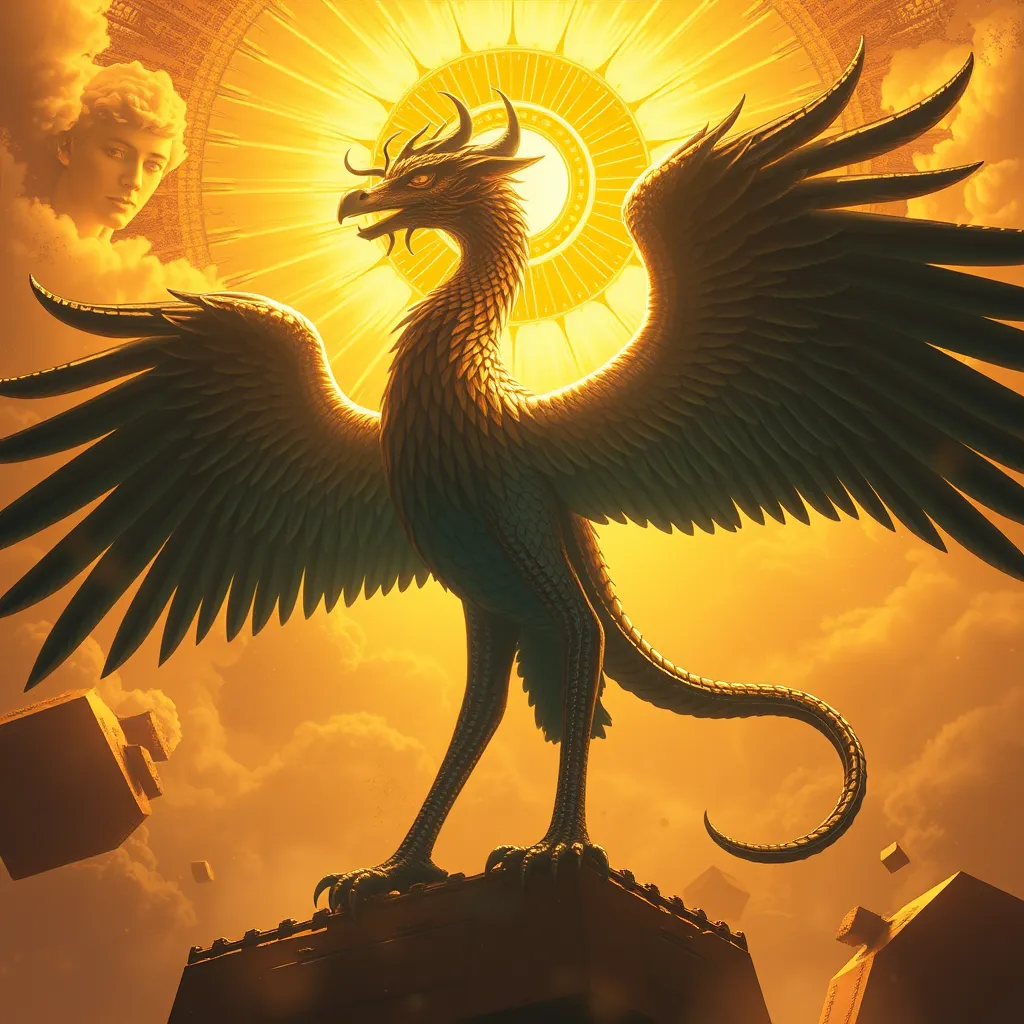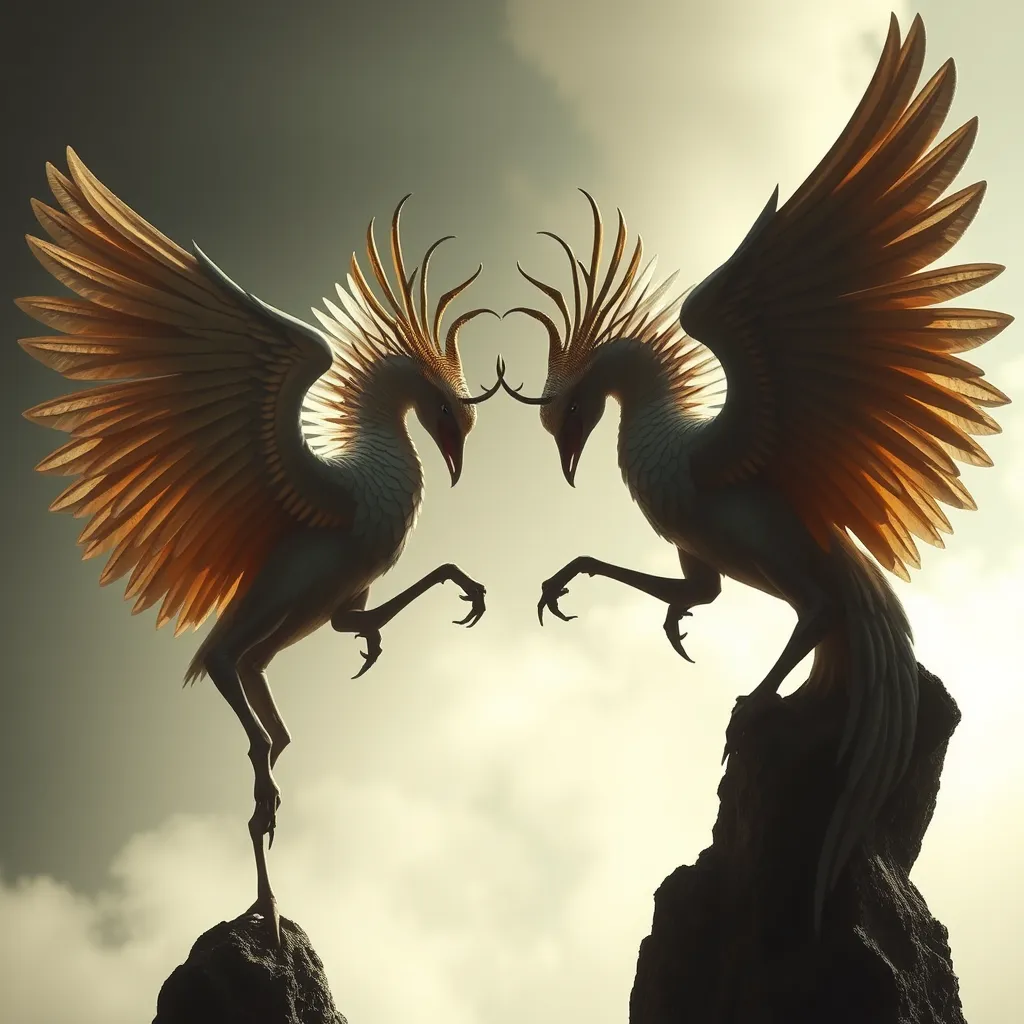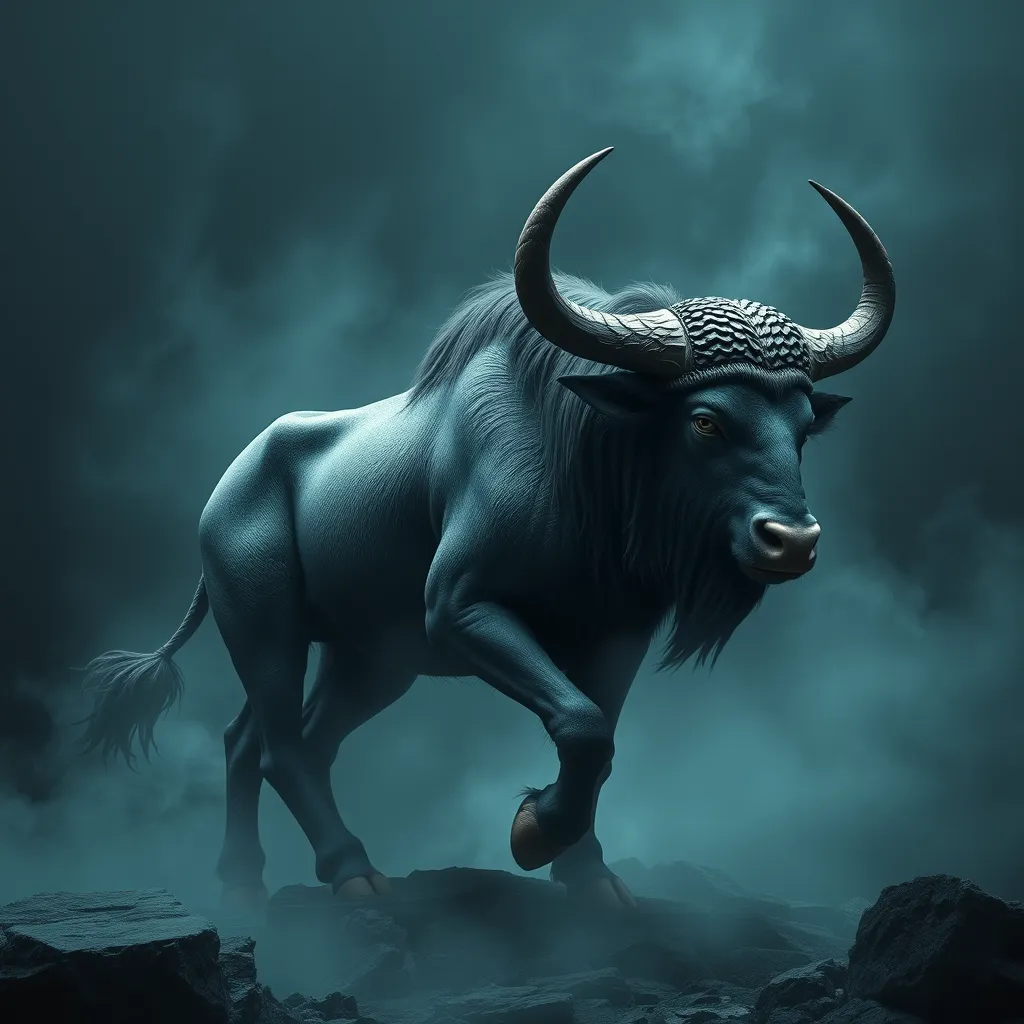The Griffin’s Connection to Horus and the Sun God Ra
I. Introduction
The Griffin, a legendary creature with the body of a lion and the head and wings of an eagle, has captivated imaginations throughout history. Its dual nature symbolizes strength and wisdom, making it a powerful figure in various mythologies. In ancient Egyptian mythology, two paramount deities, Horus and Ra, hold significant places. Horus, the falcon-headed god, represents the sky and kingship, while Ra, the sun god, embodies creation and light. This article aims to explore the intricate connections between the Griffin, Horus, and Ra, unveiling the layers of symbolism that bind these figures together in the tapestry of ancient beliefs.
II. The Mythical Significance of the Griffin
The Griffin is renowned for its majestic form and formidable presence. With the body of a lion, the king of beasts, and the head and wings of an eagle, the king of the skies, the Griffin embodies the virtues of both creatures. It is often depicted as a guardian of treasures and a protector of the divine.
- Characteristics: The Griffin is characterized by its powerful physique, keen eyesight, and fierce loyalty.
- Historical Origins: The Griffin has roots in various civilizations, including ancient Egypt, Mesopotamia, and Greek mythology.
- Symbol of Strength: Throughout history, the Griffin has been seen as a symbol of strength, protection, and divine authority.
III. Horus: The Falcon-Headed God
Horus, one of the most significant deities in Egyptian mythology, is often depicted as a falcon or a man with a falcon’s head. He represents the sky and is associated with kingship and protection.
- Protector and Deity: Horus is known as the protector of the pharaohs and the embodiment of divine kingship.
- Connection to the Sun: Horus is intricately linked to the sun, particularly in his relationship with Ra, symbolizing the cycle of day and night.
IV. Ra: The Sun God of Ancient Egypt
Ra, one of the most important gods in ancient Egyptian cosmology, represents the sun and is often depicted as a man with a hawk head, crowned with a sun disk.
- Significance: Ra is associated with creation, light, and the cyclical nature of life and death.
- Symbolism of the Sun: In ancient Egypt, the sun was a symbol of power and divinity, representing the life-giving force and the eternal cycle of renewal.
V. The Symbolism of the Griffin in Relation to Horus
The Griffin’s attributes closely mirror those of Horus, making it a fitting symbol within the context of Egyptian mythology.
- Guardian Figure: Much like Horus, the Griffin serves as a guardian figure, protecting sacred spaces and treasures.
- Art and Iconography: The Griffin appears in various forms of ancient Egyptian art, often depicted alongside gods and pharaohs, symbolizing divine protection.
VI. The Association of the Griffin with Ra
Exploring the Griffin’s potential connections to solar symbolism reveals deeper layers of meaning within Egyptian mythology.
- Solar Symbolism: The Griffin can be seen as embodying solar power, representing the strength and vigilance of the sun.
- Divine Protection: Just as Ra is a guardian of creation and light, the Griffin symbolizes protection and strength in the face of darkness.
VII. Cultural Interpretations and Adaptations
Throughout history, the Griffin has been interpreted in various ways across different cultures, often influenced by Egyptian mythology.
- Cross-Cultural Influence: The Griffin appears in Greek, Roman, and medieval heraldry, often symbolizing power and nobility.
- Legacy in Art and Literature: The Griffin’s image has persisted through time, influencing modern art and literature, signifying strength and protection.
VIII. Conclusion
In summation, the connections between the Griffin, Horus, and Ra underscore the rich tapestry of ancient Egyptian mythology. The Griffin, with its dual nature, embodies the strength and protection associated with both Horus and Ra. These mythological figures continue to resonate through time, reflecting the enduring significance of their symbolism in understanding ancient beliefs. The interplay of mythology and symbolism offers profound insights into how ancient civilizations perceived the world around them, blending the natural with the divine in their understanding of existence.



